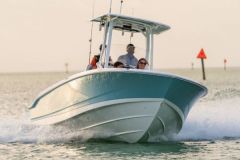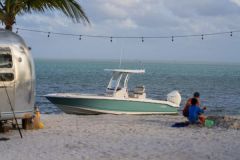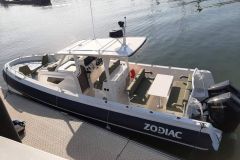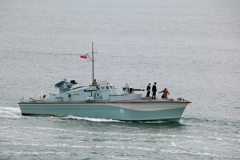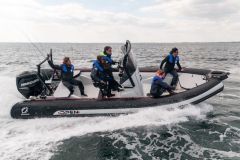If we wish to offer a historical dimension to find the first inflatable boat designers, we have to go back to the Assyrians and the Chinese of the Sung and Ming dynasties, many centuries before our time. They used sewn, air-inflated skins to make rafts.
If we really want to talk about modern rubber inflatables, we have to go all the way back to the 19th century, when the Duke of Willington tried to use this technique to support bridges, and then to move on water. The English were also very active in this field, with Lieutenant Halkett using a kind of inflatable canoe on an Arctic expedition in 1844.
Zodiac's first inflatables
The phenomenon spread throughout Europe, but it was in France that the invention finally came out of the shadows, thanks to a genius inventor by the name of Pierre Debroutelle. Employed by Zodiac, then a manufacturer of dirigible balloons and small aircraft, he had been involved in every experiment since he joined the company. In the 1930s, health problems forced him to give up his career as a pilot. However, using his experience and knowledge of inflatable techniques, he devoted himself to researching and developing prototypes. In 1934, he designed a small boat consisting of two floats joined by a canvas, glued to the bottom to prevent water penetration, and a transverse plank at the stern to facilitate sculling and accommodate a motor. The concept of the modern inflatable boat was born!
Used by the military
In 1937, at the request of the army, which was looking for a way to take bombs aboard seaplanes smoothly and without breakage, Pierre Debroutelle, inspired by his invention, designed a raft consisting of two floats and a board on top. The test was conclusive, and from then on, our man never stopped improving his invention. He soon added a transverse thwart, then an upper canvas on the forward third and, above all, a wooden keel to give the boat a small V-shape.
Patented tests with a soft bottom

The global conflict put a stop to the boat's commercial ambitions. Nevertheless, Debroutelle took advantage of this period to secretly improve it. In 1940, he began testing the Type A on a pond in the Sologne region, a boat that already bore a strong resemblance to the future MK I and MK II. For the occasion, a new element made its appearance: the outboard motor, a 9-hp Lutétia. On August 10, 1943, the patent was finally registered, marking the official start of the modern inflatable boat. In fact, the Zodiac was the first inflatable to be approved as a boat by the French Navy.
A career supported by the army
However, the road to public recognition is still long. Once again, it was the military that enabled the boat to begin a real career. Its buoyancy and dismountable design appealed to the military, and Zodiac's first products were aimed at them.
A transatlantic race to boost popularity
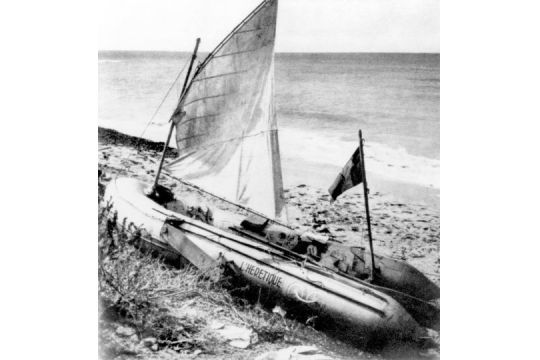
Nevertheless, the idea is beginning to catch on. Small manufacturers all over France and abroad were developing prototypes. But one event was to change the course of the tire's destiny. In the early 1950s, Alain Bombard, a young doctor previously unknown to the general public, achieved a memorable feat. Working on survival at sea, Bombard had a hard time convincing people of the validity of his theory. In 1952, to prove his theory, he decided to put himself in the position of a shipwrecked man, and set out to cross the Atlantic in a 4.20 m inflatable boat, without water or food. Sixty-four days and twelve hours later, Alain Bombard went from darkness to light, validating his theory of survival at sea and adding another dimension to the inflatable boat. From then on, there was no stopping the boat's race.
The development boom
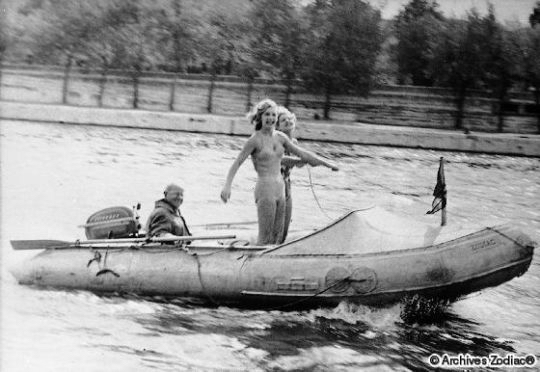
The heyday of the "trente glorieuses", the democratization of leisure activities and seaside vacations, and Bombard's feat were all to boost the market for leisure inflatables. This led to the development of a number of brands offering a wide variety of products. Attached to traditional yachting, dinghies are still widely used for sailing, often fitted with side daggerboards. At the same time, shapes remain highly heterogeneous. The nose, sometimes pointed, sometimes round, even square, matches the more or less taut floats, sometimes supporting polyester or wooden shapes. There are even a few catamaran models.
The interior layout is equally distinctive. Seats are inflatable, there's often a small, flexible windscreen, and remote control has made its appearance.
Cousteau in the lead
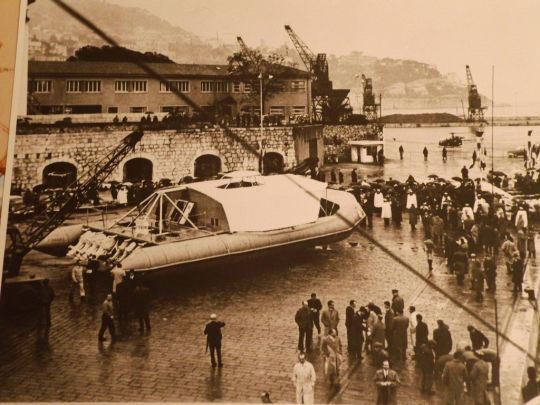
In 1956, the Motonautique Fluvial et Maritime club was the first to bring together owners of inflatable boats. In 1960, it distinguished itself by organizing a crossing of the English Channel. In 1961, seven daredevils managed to sail from Calvi to Cannes in just ten hours. That same year, Captain Cousteau launched the Amphitrite, a huge inflatable powered by a veritable battery of outboards. The 60s saw the explosion of this type of boat. By 1970, there were already some twenty brands on the French market, in a wide variety of shapes and sizes.
A rigid hull and flexible floats
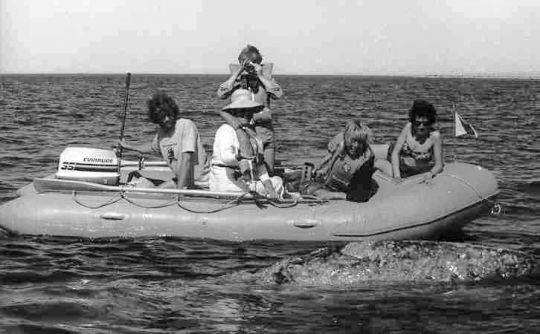
In the 70s, the semi-rigid changed all that. While some credit Frenchman Paul Brot with the invention, it seems that the idea originated in Great Britain. The Frenchman only had the genius to develop and exploit the principle. Be that as it may, this innovation was to revolutionize the world of inflatables, with the semi-rigid taking the lion's share of the market over the next fifteen years. Leading the way were the Italians, who may not have invented the RIB, but they knew how to make it grow and give it a soul.
An enduring success
Today, there are over three hundred manufacturers worldwide, and more than forty brands on the French market alone. A development that confirms the incredible success of this craft. Today, it's one of the best-selling boats in Europe and the rest of the world. From the military to the leisure boater, the inflatable has adapted to offer unrivalled versatility.






